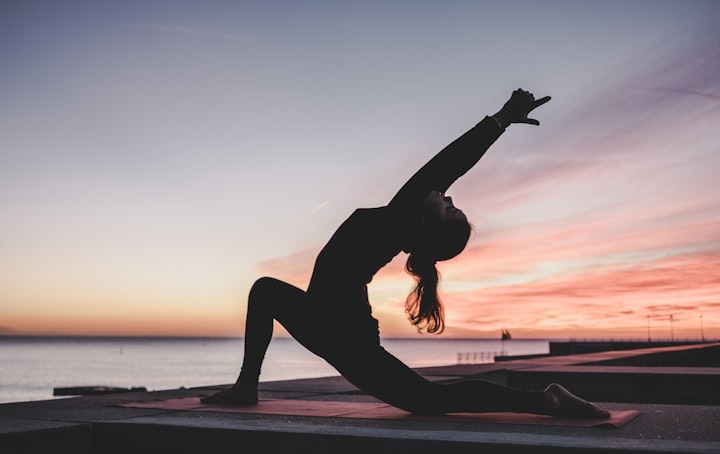Most of us know the version of yoga of the 21st century, but we may not fully understand the people who created yoga many, many years ago. If you want to gain a deeper and more accurate understanding of the history of yoga, you can look at the teaching often referred to as the "Bible of Yogis." Here I will give you an insight into a history of yoga from the perspective of a yoga teacher, a yogi and an experienced professional in the field of meditation.
The earliest Sanskrit commentary available is Yoga bhashya (language yoga) and is attributed to Vyasa. This text was written sometime in the second century and describes the path of Raja Yoga, which is often called classical yoga. It is also known that Patanjali taught RajA yoga in a Sanskrit text consisting of over 200 aphoristic statements. This is the first known text on yoga that is exclusively devoted to the physical practice of yoga and suggests that yoga as a form of exercise was already in progress in the 1700s and 1800s.
Patanjali wrote a collection of 196 Indian verses, which represent the theory and practice of yoga. Sivananda wrote books devoted to both yoga and philosophy and taught her students to branch out and expand with the practices of yoga. Yoga Hatha, sometimes called psychophysical yoga, was further elaborated in the 15th century AD by the philosopher and yogic philosopher Sivaganga, the founder of modern yoga in India.
He is considered one of the most important figures in the development of modern yoga in India and the inventor of yoga itself.
There are several texts which repeatedly refer to the philosophical basis of the physical side of yoga, but although they refer to it, its attitude is hardly mentioned or not mentioned at all. The yoga Sutras of Patanjali are the most important source of information about yoga and its physical aspects. It is important to point out here that while most of us consider yoga to be a physical practice of asanas and postures, PataNdali does not mention any particular type of "asanas" in any of them. The Upanishads can only describe yoga in its most basic form when it comes to dealing with the physical state and not with its spiritual state.
A clearer explanation is to be found in the Bhagawadgita, which describes the philosophical foundations of yoga as fully as its physical aspects. This label applies to the eight-fold yoga, also known as "Raja Yoga," which Patanjali teaches in his Yoga Sutra. The main text of Raja Yoga is the 8-part Yogic Path, outlined by the Yoga Sutras of PataNdali.
The next significant phase in the history of yoga is the development of Hatha Yoga, which is so widespread throughout the West today. This practice gave rise to the widespread - practiced - form of yogic meditation or yoga meditation. Originally yoga was developed as a meditation tool and it was here that we first came to the idea that yoga and meditation are inextricably linked to the quiet mind.
Raja Yoga is known as classical yoga, which is a form of yoga in which yoga is structured and therefore easier to follow and teach.
Classical yoga was propagated by Maharishi Patanjali almost 5000 years ago and is part of Vedic literature. The philosophy of yoga was in the hands of Brahmins, Rishis and holy sages at that time. It is still incredibly vague and it is difficult to trace the history of yoga back to its roots. There is also the secrecy of its teaching and the philosophy behind it, which must be traced back through the yoga Sutras we know today. Between 100 and 500 BC he developed what we know today as "Yoga Sutra," and developed it into the yoga of Raja Yoga as we know it today.
It is believed that Vedic hymns reveal the true nature of yoga as a form of meditation, meditation of the mind and practice of self-discipline.
The yoga community, which relies on ancient teachings and practices, often says that yoga is thousands of years old, but most of us do not know the history of yoga. Many people take yoga techniques as physical exercise, and physical yoga poses have been a part of yoga since the advent of the Hatha period. Although there is no doubt that yoga is millennial, the addition of physical yoga as an exercise has been a great leap in the evolution of yogis and yoga as we know it.
Yoga is said to have begun in ancient times as a religion or belief system organised around the practice of meditation, yoga and other forms of physical movement.
The basic texts of yoga or yoga sutra are attributed to Patanjali, who lived in India around 150 BC. The next repetition in the history of yoga began a few centuries after PataJali and the Yoga Sutras. Basic texts for yoga and yoga suttas are attributed to Patan Jala, a yogi and founder of the Indian yoga movement, and his son, the famous yoga teacher and yoga teacher Rama.
About the Creator
Something Complicated
I’m the correct Something







Comments
There are no comments for this story
Be the first to respond and start the conversation.